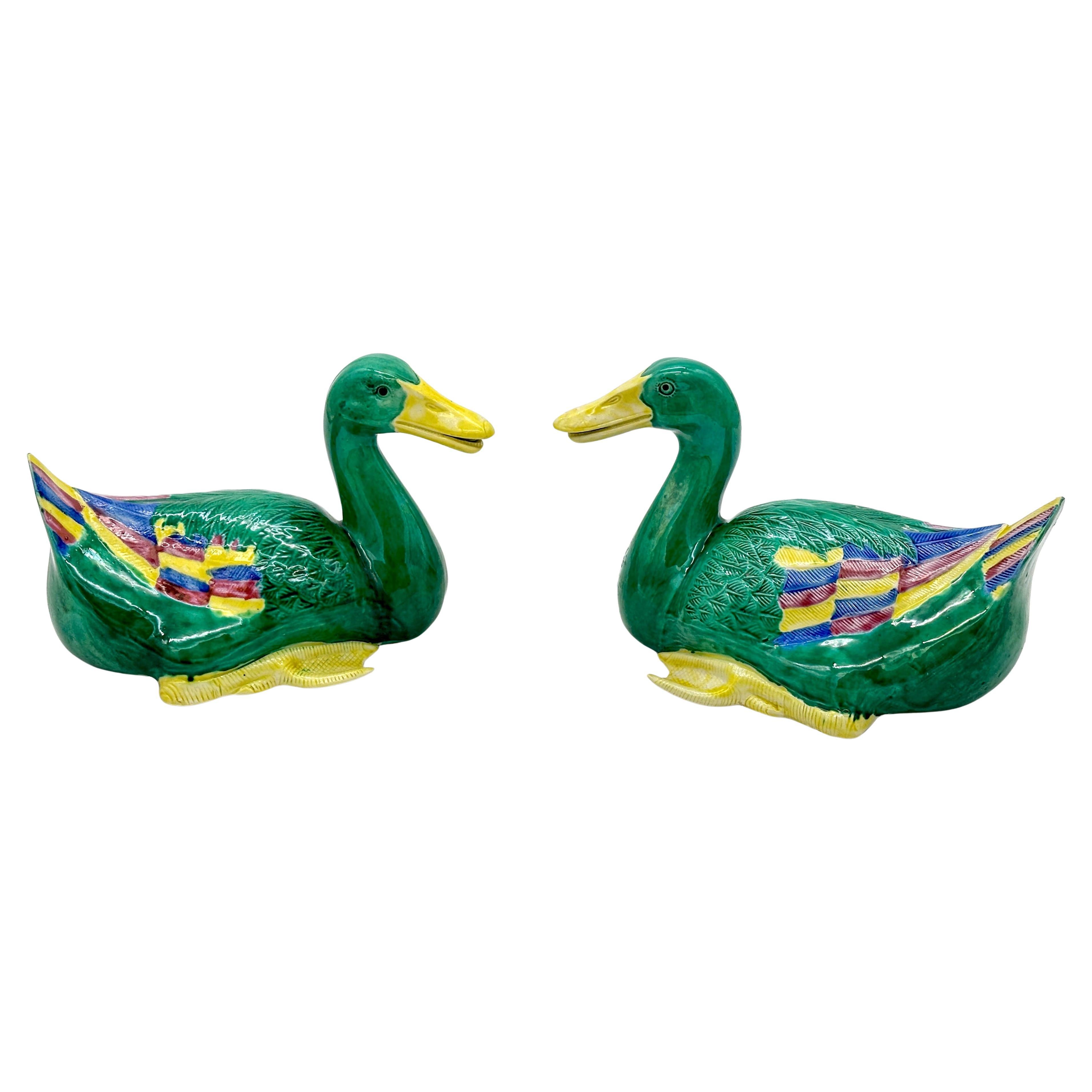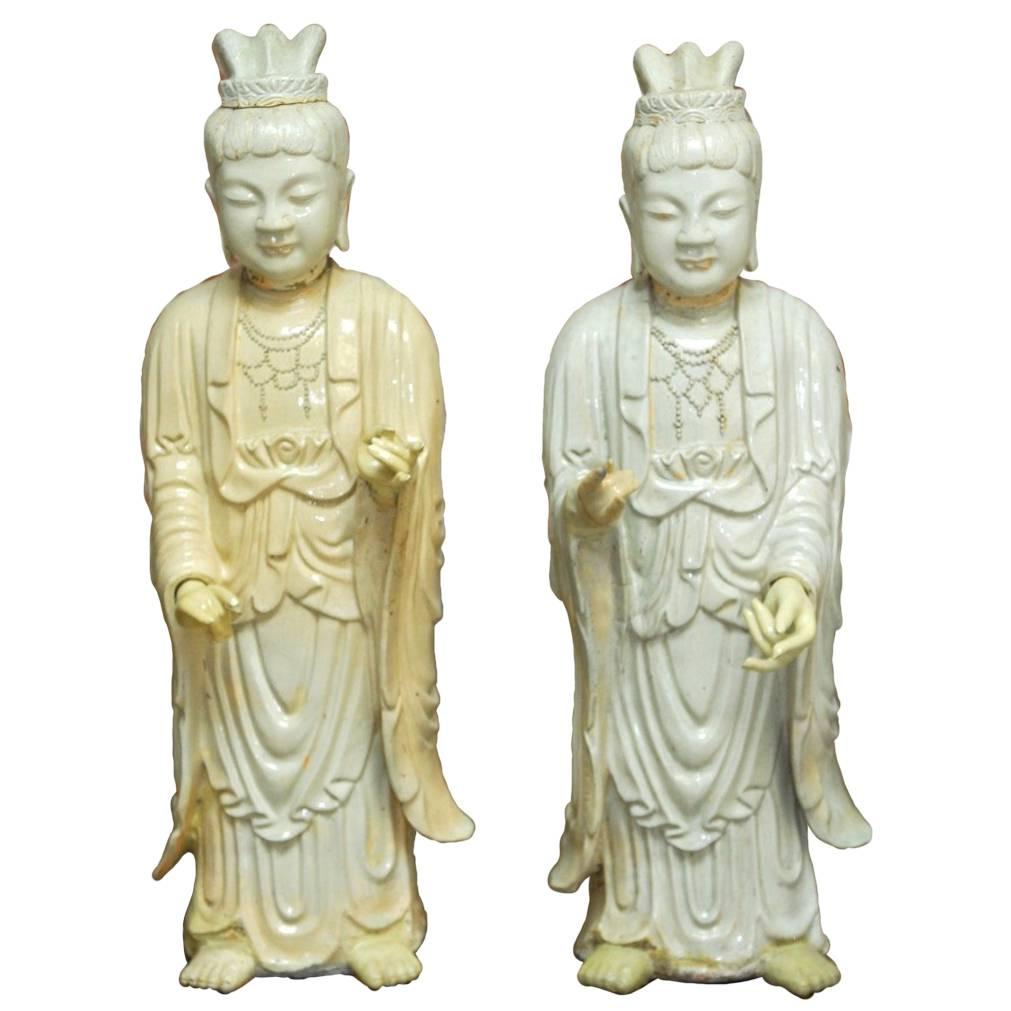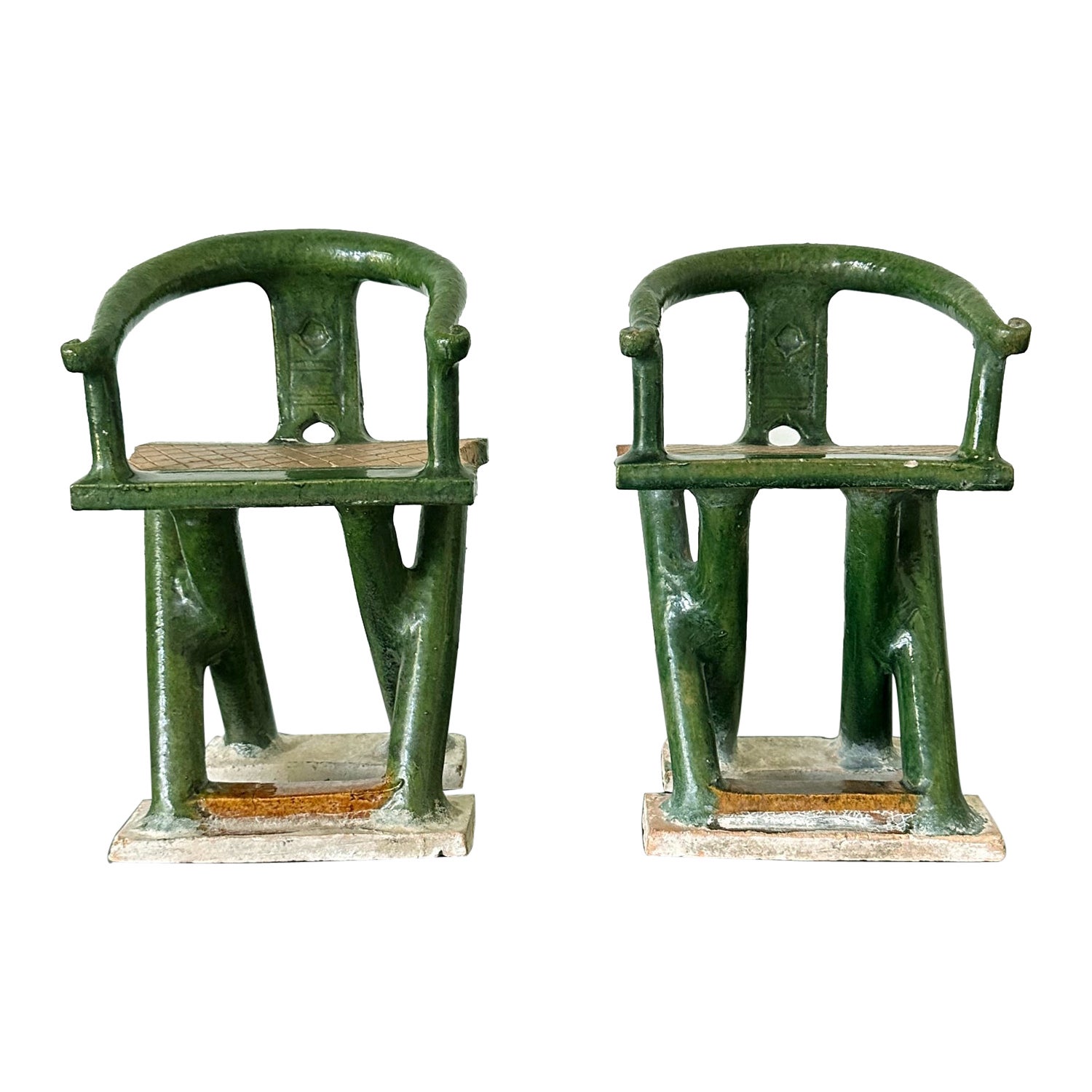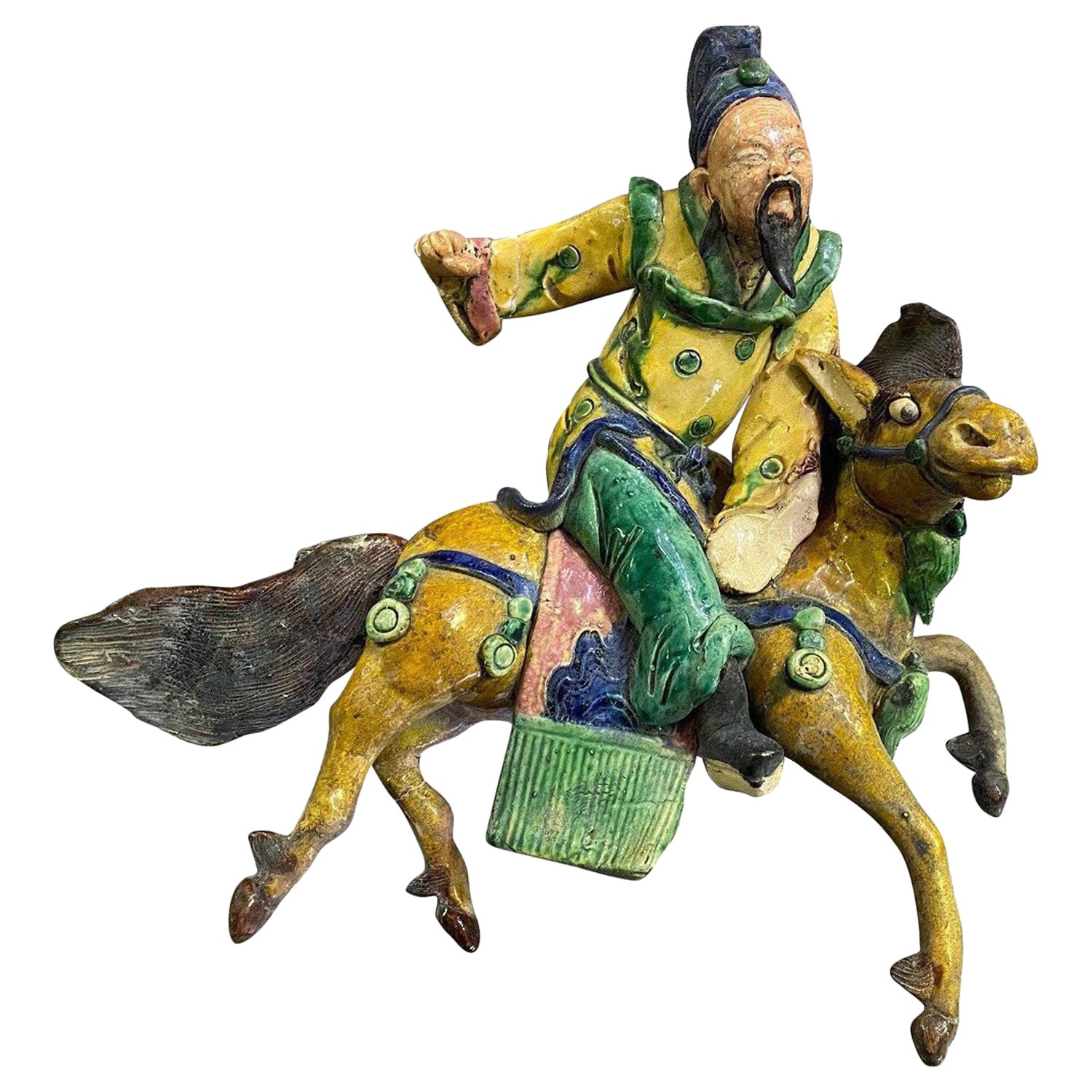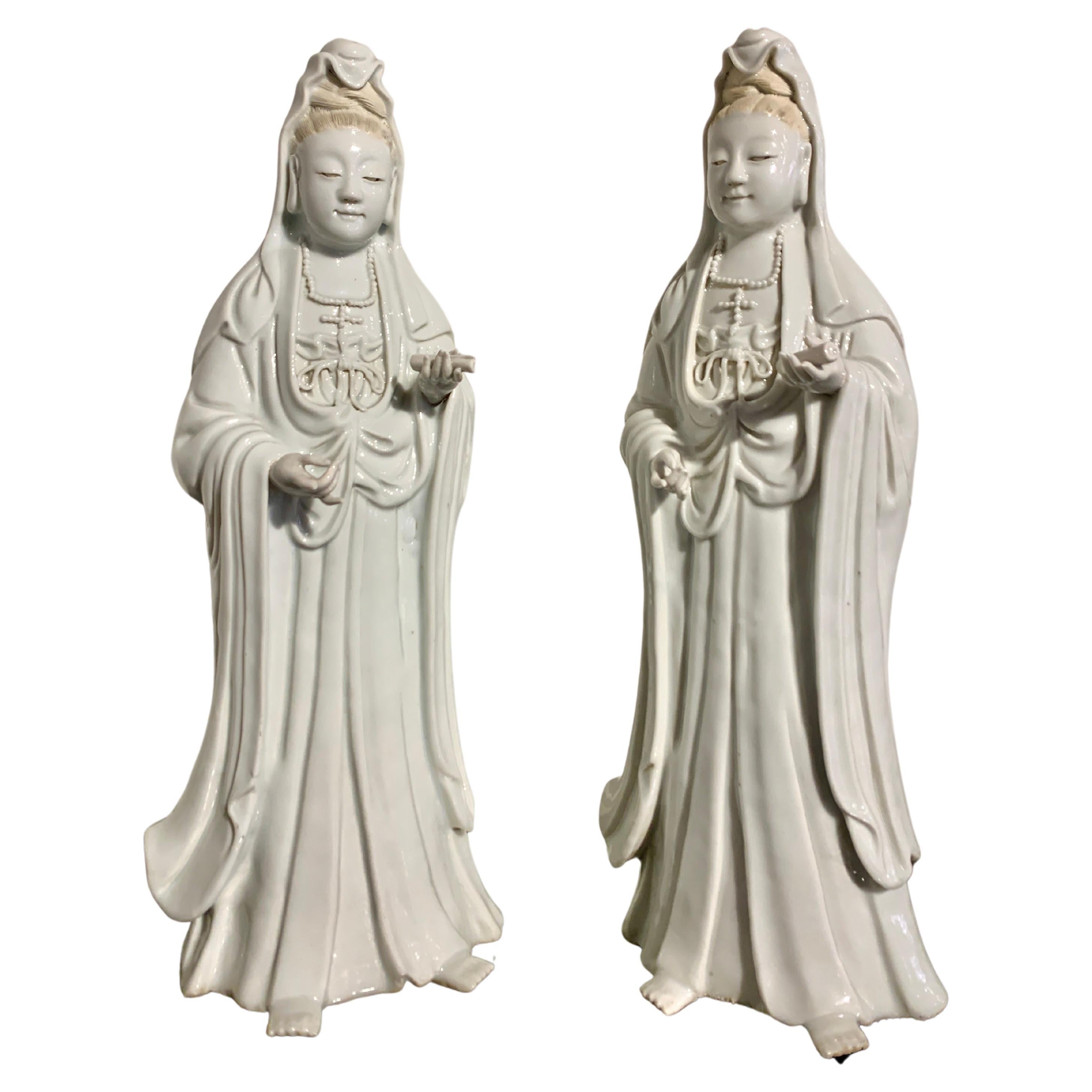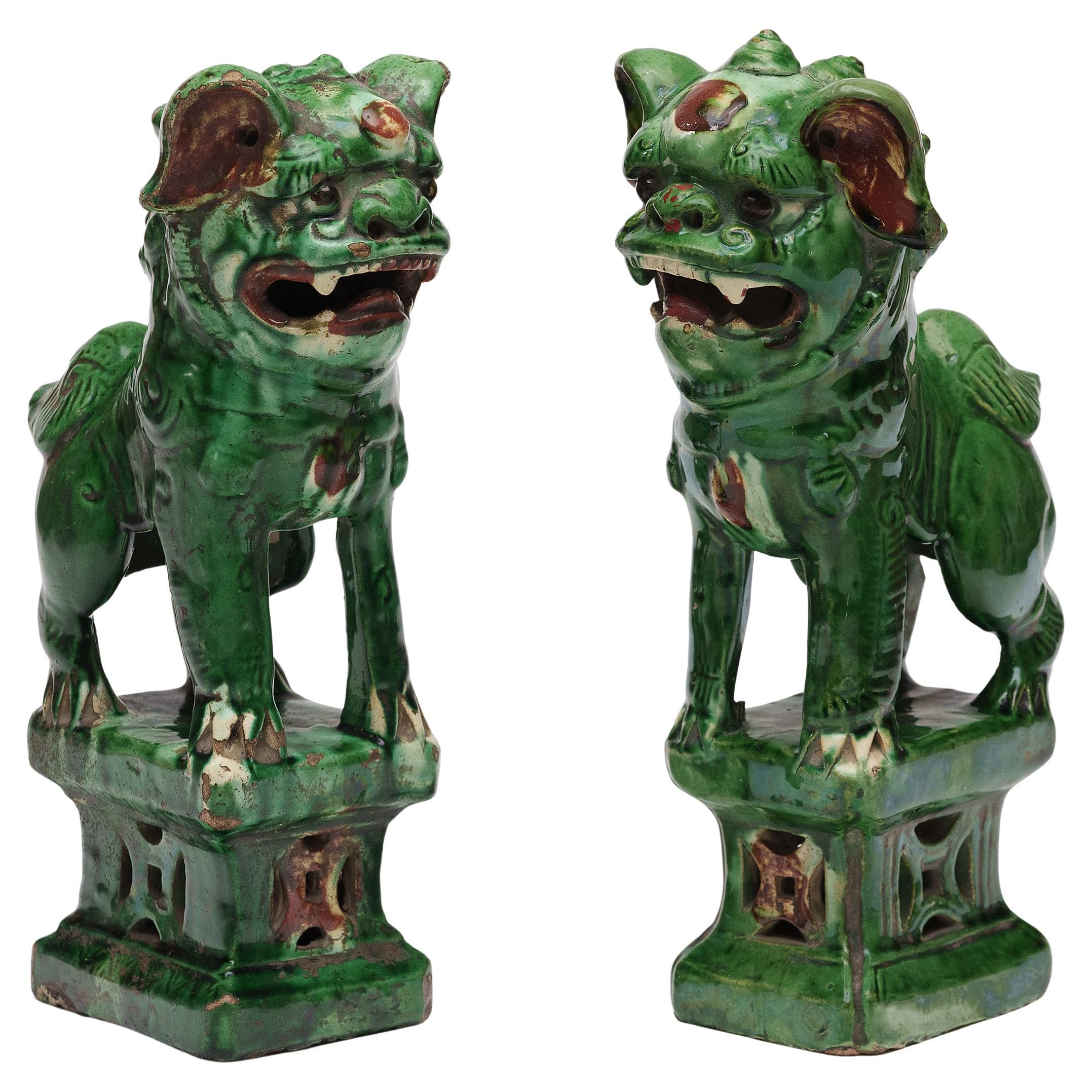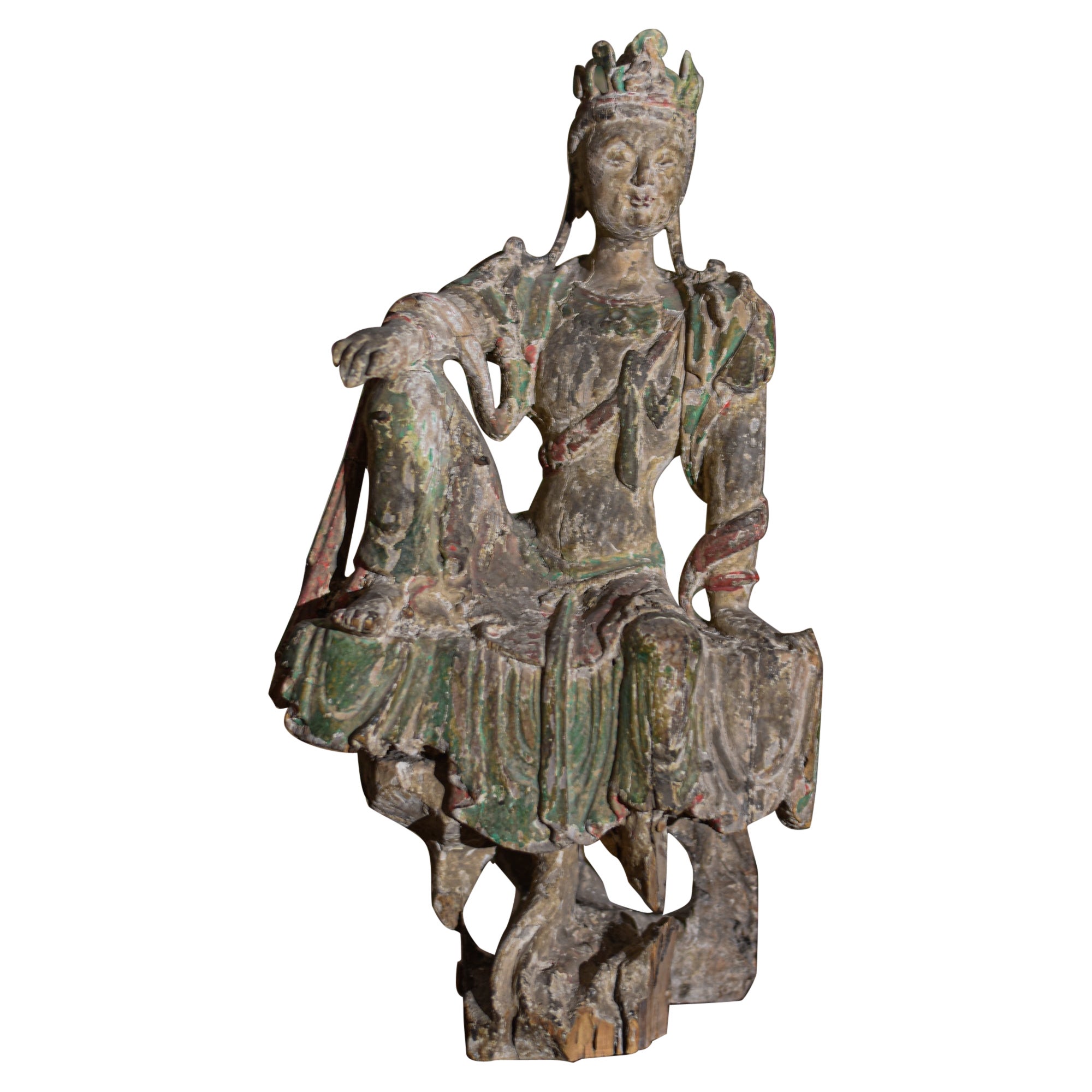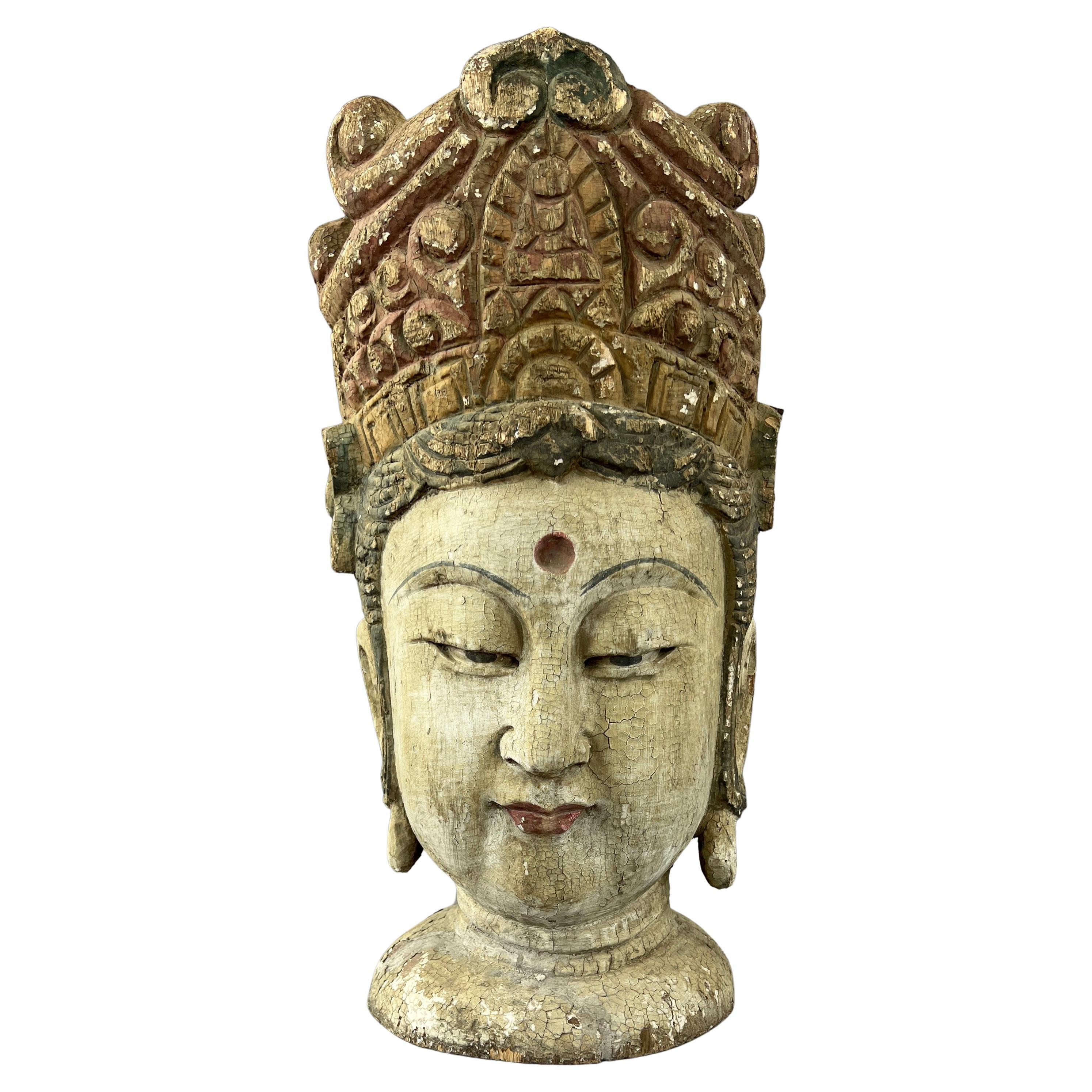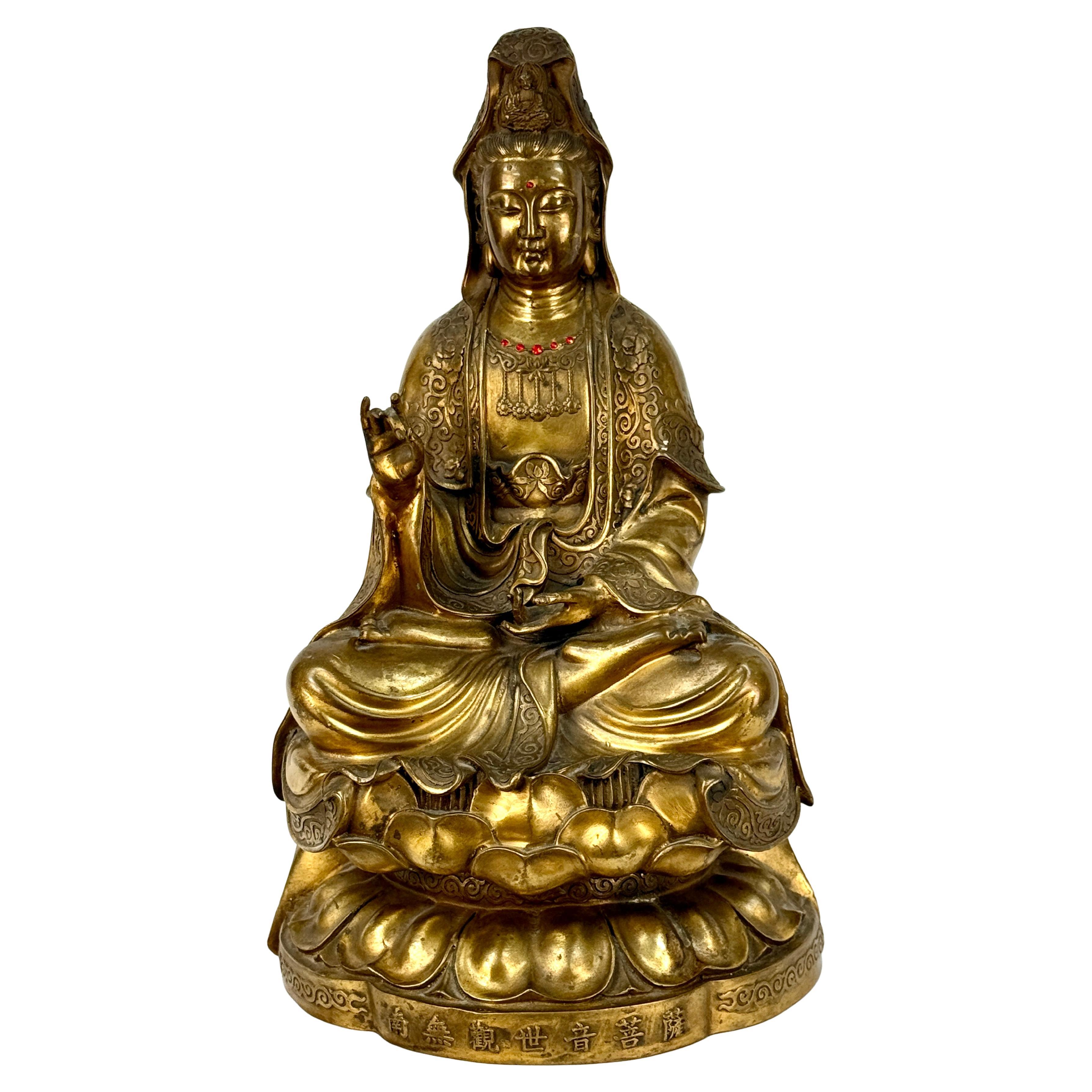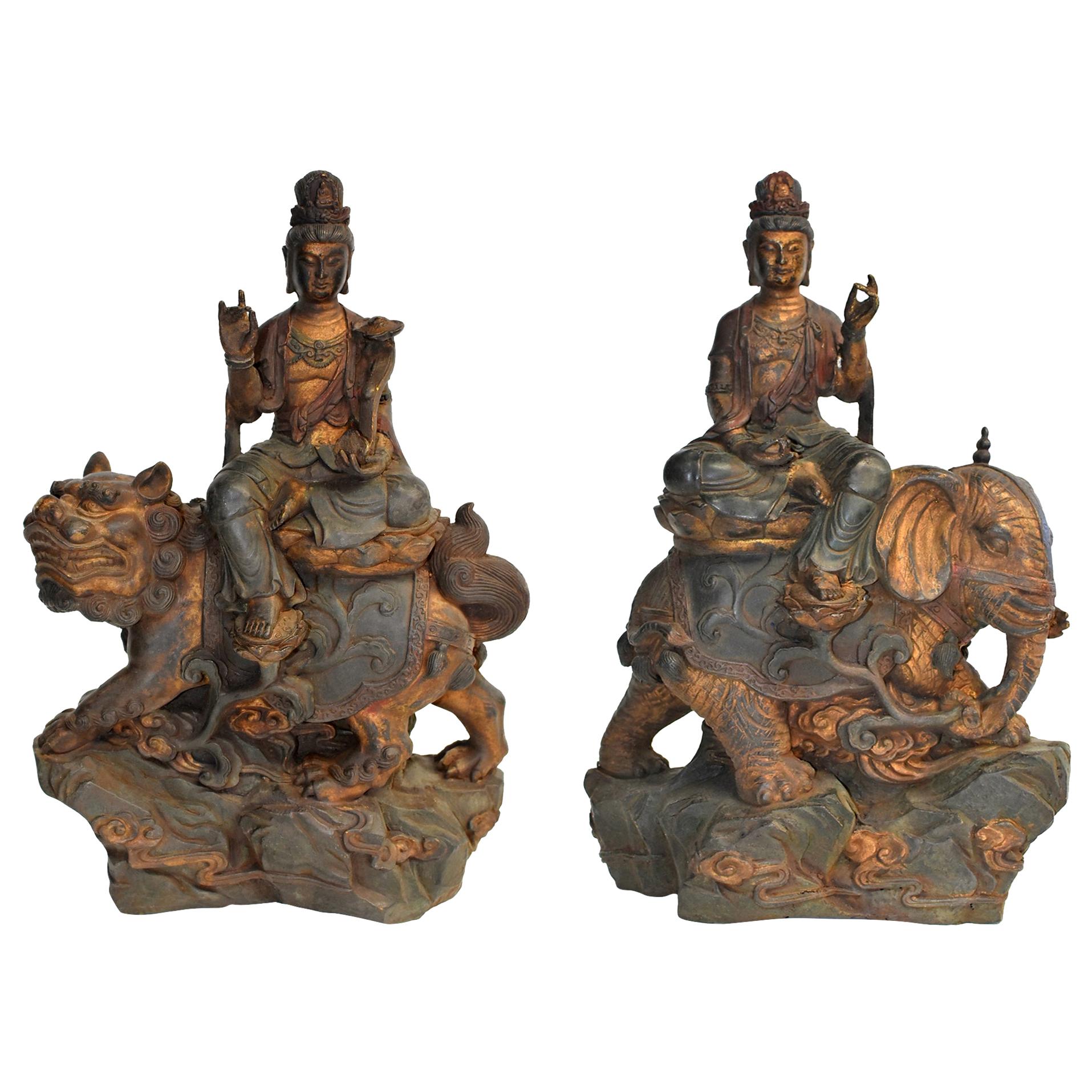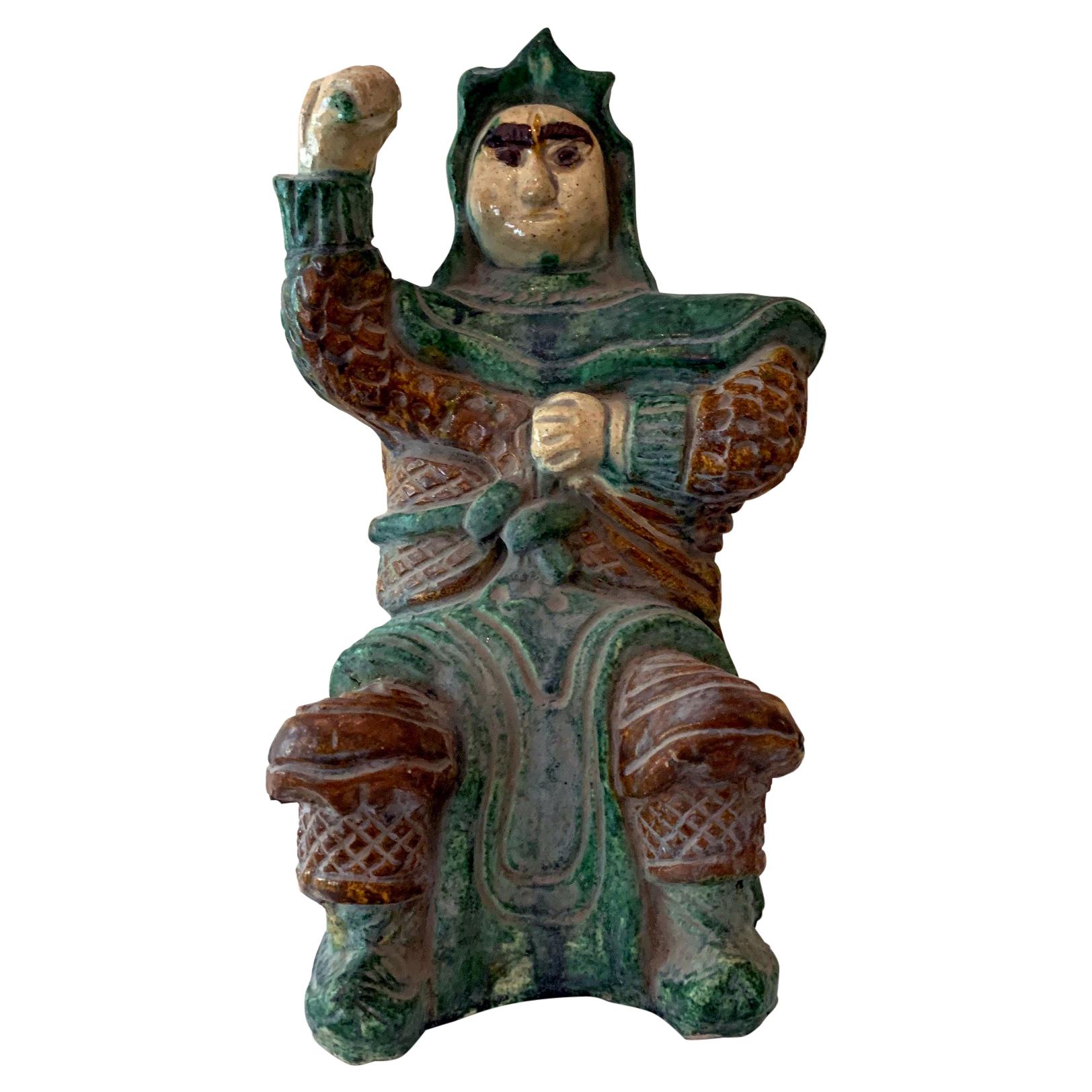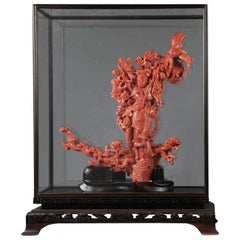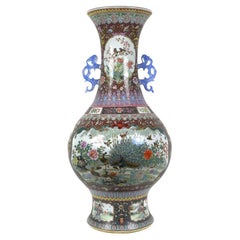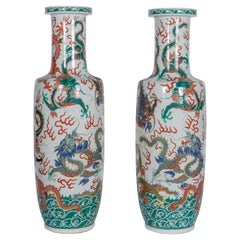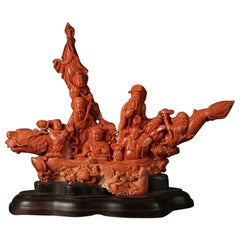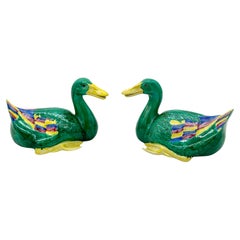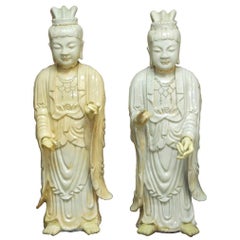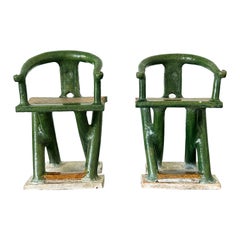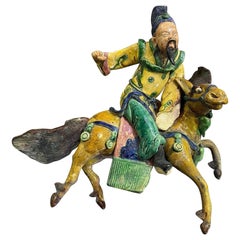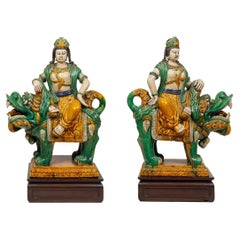
Monumental Pair of Chinese Sancai Glazed Pottery Figures of Guan Yin and Lion
View Similar Items
Want more images or videos?
Request additional images or videos from the seller
1 of 21
Monumental Pair of Chinese Sancai Glazed Pottery Figures of Guan Yin and Lion
About the Item
- Dimensions:Height: 44 in (111.76 cm)Width: 28 in (71.12 cm)Depth: 15 in (38.1 cm)
- Materials and Techniques:
- Place of Origin:
- Period:
- Date of Manufacture:20th Century
- Condition:Wear consistent with age and use.
- Seller Location:New York, NY
- Reference Number:1stDibs: LU1798233517142
About the Seller
5.0
Vetted Professional Seller
Every seller passes strict standards for authenticity and reliability
Established in 1980
1stDibs seller since 2016
63 sales on 1stDibs
Typical response time: 5 hours
Authenticity Guarantee
In the unlikely event there’s an issue with an item’s authenticity, contact us within 1 year for a full refund. DetailsMoney-Back Guarantee
If your item is not as described, is damaged in transit, or does not arrive, contact us within 7 days for a full refund. Details24-Hour Cancellation
You have a 24-hour grace period in which to reconsider your purchase, with no questions asked.Vetted Professional Sellers
Our world-class sellers must adhere to strict standards for service and quality, maintaining the integrity of our listings.Price-Match Guarantee
If you find that a seller listed the same item for a lower price elsewhere, we’ll match it.Trusted Global Delivery
Our best-in-class carrier network provides specialized shipping options worldwide, including custom delivery.More From This Seller
View AllExceptional Chinese Carved Coral Figural Group of a Guanyin Kwan Yin Phoenix
Located in New York, NY
An exceptional Chinese carved coral figural group of a Guanyin, Kwan Yin with a Phoenix.
Very finely carved. In a custom made glass...
Category
Early 20th Century Chinese Sculptures and Carvings
Materials
Coral
Monumental Chinese Famille Rose Porcelain "Peacock" Palace Vase
Located in New York, NY
A monumental Chinese famille rose porcelain "Peacock" palace vase, Republic period.
Magnificent quality and palace sized Chinese hu-form vase with side h...
Category
Late 20th Century Chinese Qing Ceramics
Materials
Porcelain
A Highly Rare Pair of Monumental Qing Dynasty Rouleau Porcelain "Dragon" Vases
Located in New York, NY
A Highly Rare Pair of Monumental Qing Dynasty Rouleau Porcelain "Dragon" Vases
A Masterful Display of 19th Century Chinese Artistry:
The mid-19th century Qing Dynasty marked a period of artistic innovation and imperial grandeur, as exemplified by this rare and monumental pair of Rouleau vases. These exceptional porcelain works, notable for their commanding size and vibrant palette, are a testament to the unparalleled craftsmanship that flourished during this era. Embellished with a dynamic tableau of dragons rendered in bold hues of red, green, blue, brown, and yellow, these vases embody both artistic brilliance and the deep cultural symbolism woven into Chinese decorative arts.
Artistic Excellence and Symbolism:
At the heart of these magnificent vases lies a visual narrative that channels the power and mystique of the dragon, a central motif in Chinese culture symbolizing imperial authority, strength, and cosmic energy. The intricate depiction of dragons in motion, intertwined amidst stylized ocean waves, conveys a sense of fluidity and dynamic movement. Each color used—the crimson reds, verdant greens, striking blues, earthy browns, and golden yellows—has been meticulously applied, reflecting a mastery of the high-fired, polychrome enameling techniques perfected during the Qing Dynasty.
The Rouleau form, with its cylindrical body, short neck, and slightly flared mouth, was a favored shape for large-scale vases in the 18th and 19th centuries. The form’s structured elegance allowed for expansive decorative panels, serving as an ideal canvas for intricate, multi-layered designs. This pair demonstrates how artisans skillfully balanced the flowing movement of the dragons with the rhythmic motifs of waves, resulting in a harmonious composition that engages the viewer from every angle.
Craftsmanship and Technique:
These vases represent the pinnacle of porcelain artistry achieved under the Qing Dynasty, showcasing techniques that reflect centuries of refined craftsmanship. The precision in the application of overglaze enamels and the expert manipulation of kiln temperatures to achieve vibrant and consistent coloration are indicative of the expertise within the imperial kilns. The dragons' scales, rendered with remarkable detail, create a textured effect that contrasts beautifully with the smooth, undulating waves, enhancing the three-dimensional quality of the design.
The depth of color and the crisp delineation of each element point to a rigorous and time-intensive process. These qualities signify the involvement of highly skilled artisans who adhered to the imperial standards set by the royal court, ensuring that each piece was a fitting representation of the empire’s wealth and cultural prowess.
Historical and Cultural Significance:
Vases of this caliber were not merely decorative; they were imbued with profound symbolic meaning and often commissioned for imperial use or gifted as prestigious diplomatic offerings. The dragon motif, deeply embedded in Chinese folklore and philosophy, was associated with the emperor himself—known as the "Son of Heaven"—and symbolized his divine right to rule. These vases also reflect the Qing Dynasty's flourishing export trade and the global fascination with Chinese porcelain during the 19th century. European collectors and royal patrons prized such pieces for their artistry and the exoticism they represented, contributing to a legacy that elevated Chinese porcelain to a revered status in the annals of decorative art history.
Provenance and Collectability:
The extraordinary scale, exceptional craftsmanship, and rarity of this pair establish them as museum-quality works. Such vases would have held a place of honor in a palace or wealthy estate, reflecting not only the owner’s status but also an appreciation for the profound cultural and artistic traditions of China. Their provenance—potentially tied to an imperial commission or significant historical collection—underscores their importance as objects of study and admiration.
Provenance:
Private American Collection, acquired in London, circa 1905.
Thence by descent to the current owners
Solomon Treasure...
Category
Antique Mid-19th Century Chinese Qing Ceramics
Materials
Porcelain
Exceptional Chinese Carved Coral Figural Group of a Boat with Eight Immortals
Located in New York, NY
An exceptional Chinese carved coral figural group or statue of a boat with eight immortals. The boat in a form of a carved dragon wi...
Category
Early 20th Century Chinese Sculptures and Carvings
Materials
Coral
Exceptional Large Chinese Carved Coral Figural Group Statue of Female Immortals
Located in New York, NY
An exceptional and large Chinese carved coral figural group / statue of female Immortals.
Very finely carved, very large and heav...
Category
Early 20th Century Chinese Sculptures and Carvings
Materials
Coral
Magnificent, Large Japanese Carved Coral Figural Group, Seven Figures with Fish
Located in New York, NY
Magnificent and Large Japanese Carved Coral Masterpiece – Seven Figures Amid a Reef with Fish and Storks
A breathtaking celebration of artistry and natural beauty, this exceptional ...
Category
Vintage 1960s Japanese Sculptures and Carvings
Materials
Coral
You May Also Like
Pair of Chinese Sancai Glazed Figures of Seated Ducks
Located in West Palm Beach, FL
Pair of Chinese Sancai Glazed Seated Ducks—20th Century
Dimensions (Each Duck): 9” W x 6” H x 5” D
This stunning pair of Chinese sancai-glazed ceramic ducks, made in the 20th century, showcases vibrant green, yellow, blue, and aubergine hues in the traditional sancai (three-color) glazing technique. Inspired by Tang dynasty ceramics, these vintage Chinese duck...
Category
20th Century Chinese Chinese Export Ceramics
Materials
Porcelain
Pair of Chinese Glazed Ceramic Celestial Guanyin Deities
Located in Rio Vista, CA
Remarkable pair of Chinese glazed ceramic celestial Buddhist Guanyin deities. Featuring two beauties depicted standing in draped robes with casc...
Category
20th Century Chinese Qing Sculptures and Carvings
Materials
Ceramic
$1,200 Sale Price / set
33% Off
Pair of Chinese Ming Dynasty Tomb Funeral Pottery Chair Models
Located in Atlanta, GA
A pair of Chinese stoneware horseshoe cross chairs circa Ming dynasty (15th-17th century). The miniature models were traditionally made as burial offeri...
Category
Antique 16th Century Chinese Ming Ceramics
Materials
Stoneware
Chinese Glazed Ceramic Pottery Guardian Ancestor Roof Tile Qing Figure on Horse
Located in Studio City, CA
A fantastic piece. Wonderfully glazed and colored work of a seated man with brightly colored robes riding a mythical galloping horse.
We believe this is Qing Dynasty (1644-1912) ...
Category
Early 20th Century Chinese Qing Ceramics
Materials
Ceramic, Pottery
Pair of Chinese Sancai Fu Lion Protectors, c. 1850
Located in Chicago, IL
Believed to be powerful protectors against malevolent spirits, fu lion dogs have stood guard at the entryways and thresholds of Chinese homes for centuries. This pair of small cerami...
Category
Antique Mid-19th Century Chinese Qing Figurative Sculptures
Materials
Stoneware
Pair Chinese White Glazed Guanyin, Qing Dynasty, 18th Century, China
Located in Austin, TX
A sublime and rare pair of Chinese white glazed porcelain figures of Guanyin, attributed to Tang Ying (1682 - 1756), Qing Dynasty, Qianlong Period, China.
This ethereal pair of white glazed porcelain figures depict the revered Buddhist Goddess of Mercy, Guanyin. Guanyin is portrayed standing, wearing heavy robes that drape beautifully around her figure. Bare feet peek out from under the hem of the robes. Her hair piled in a high chignon and covered by a cowl. The treatment of the hair, finely textured, unglazed, and with remnants of darker pigment, is typical of works by Tang Yin (1682 - 1756), who was the head of the imperial porcelain works at Jingdezhen.
Guanyin's beatific face is set in a serene smile, with a small, flat nose, and downcast, heavily lidded, almond shaped eyes. A simple beaded necklace graces her chest. Her hands held out, and may have once held attributes.
The hands were originally removable, but have since been permanently attached.
The figures crafted of a fine porcelain and glazed all over in a supple white glaze.
One figure bears a label from the Rafi Mottahedeh collection to the back.
Provenance:
Chinese Porcelain Company...
Category
Antique 18th Century Chinese Qing Ceramics
Materials
Porcelain
Recently Viewed
View AllMore Ways To Browse
Taoist Art
Guan Yin
Bodhisattva Wood
Sancai Figure
Chinese Green Ceramic Vase Pair
Sancai Vase
Guan Vase
Green Willow China
Chinese Porcelain Yuan
Famille Rose Medallion
17th Century Chinese Blue And White Ceramic
Celadon Chinese Pottery
Chinese Water Bowl
Michael Holland
Chinese Porcelain Immortal
Enameled Bowls
Kraak Wanli
Magpie Antique
